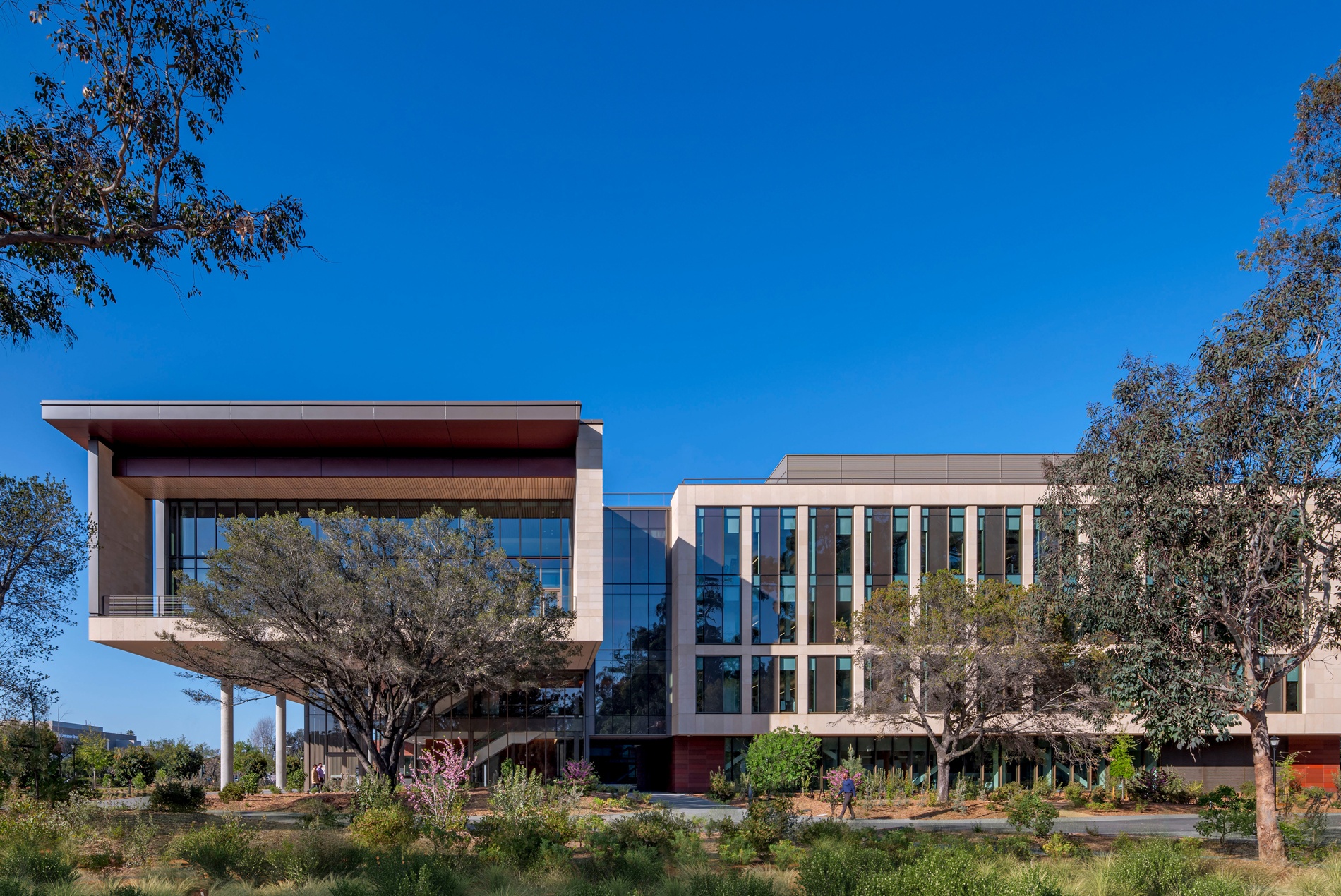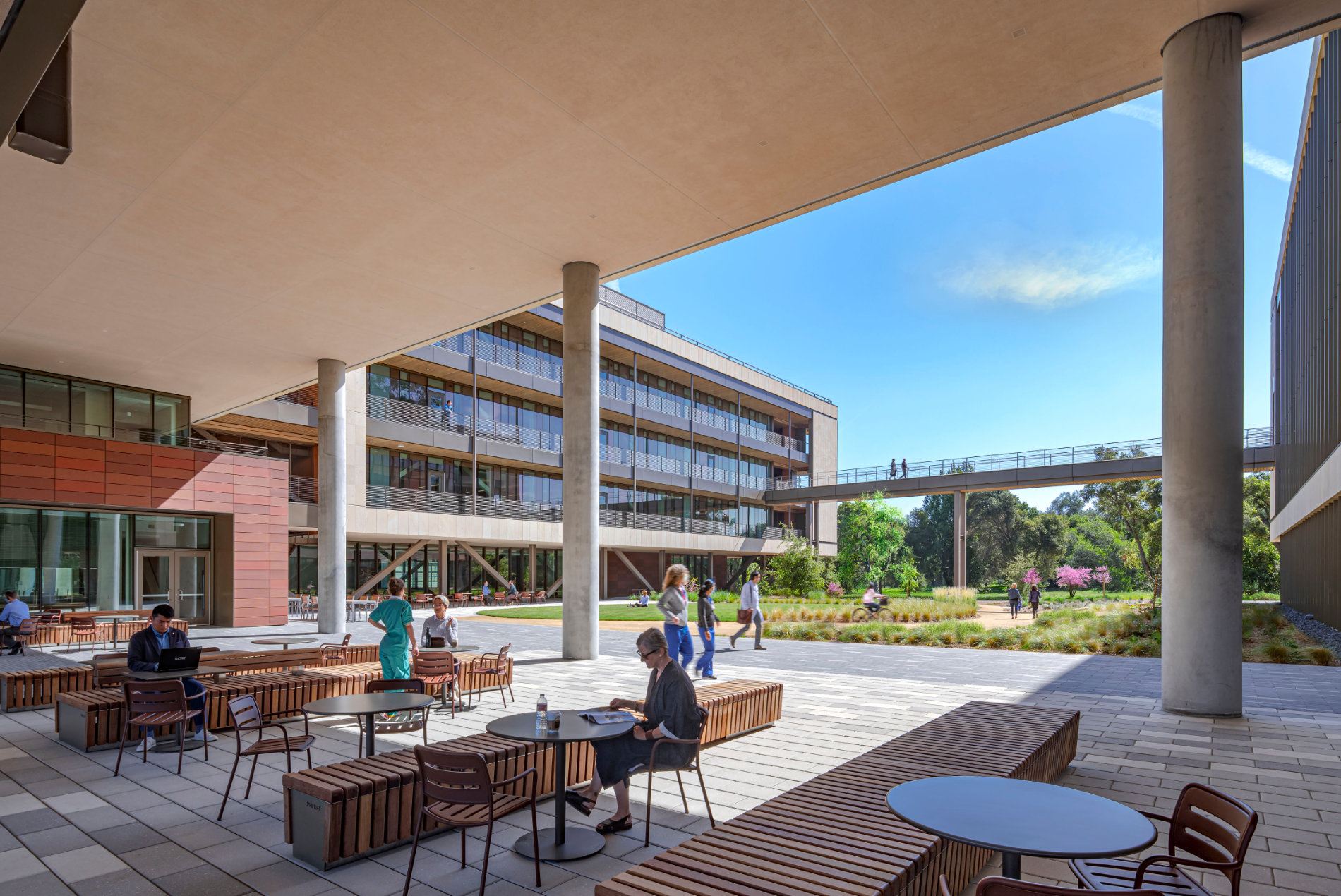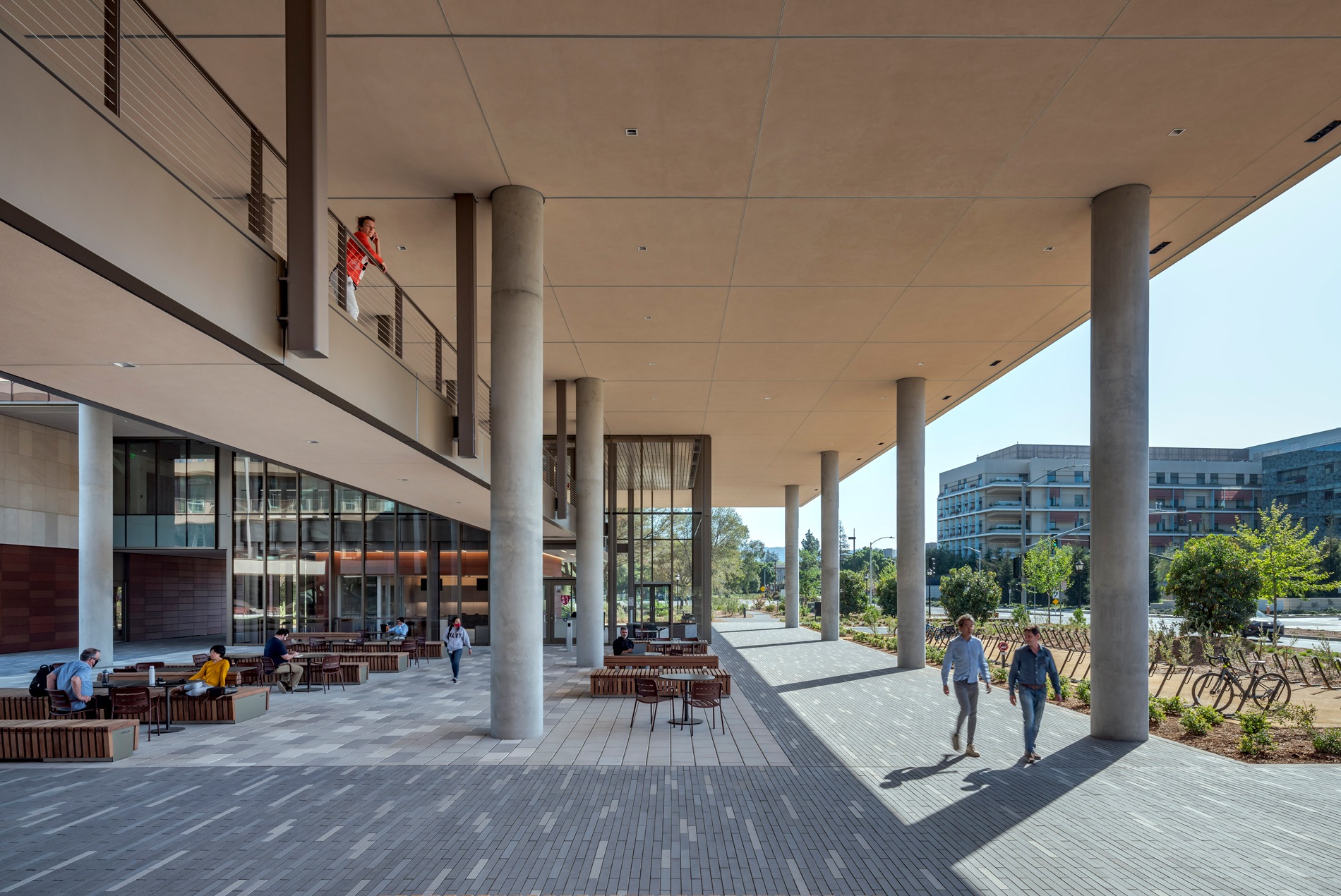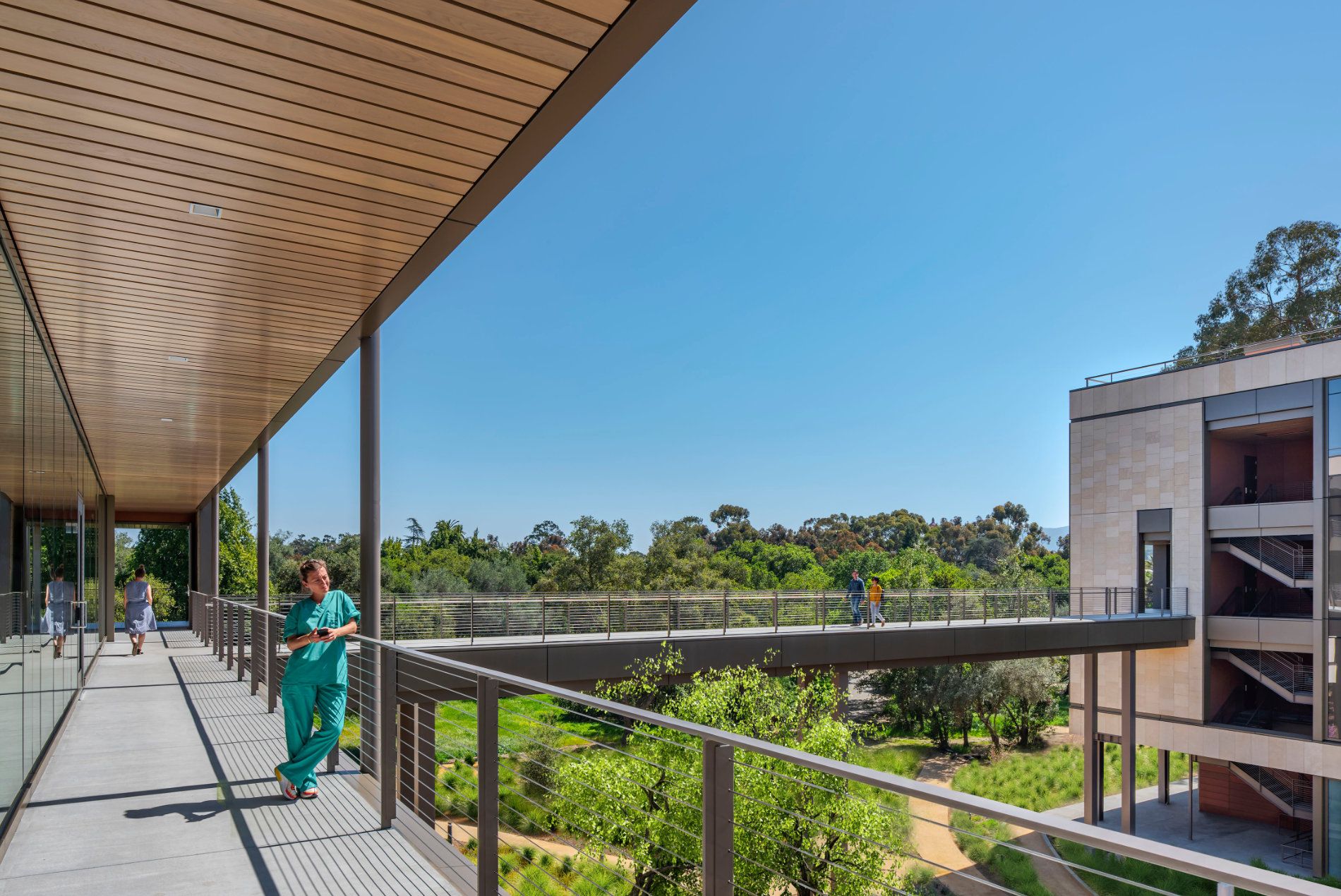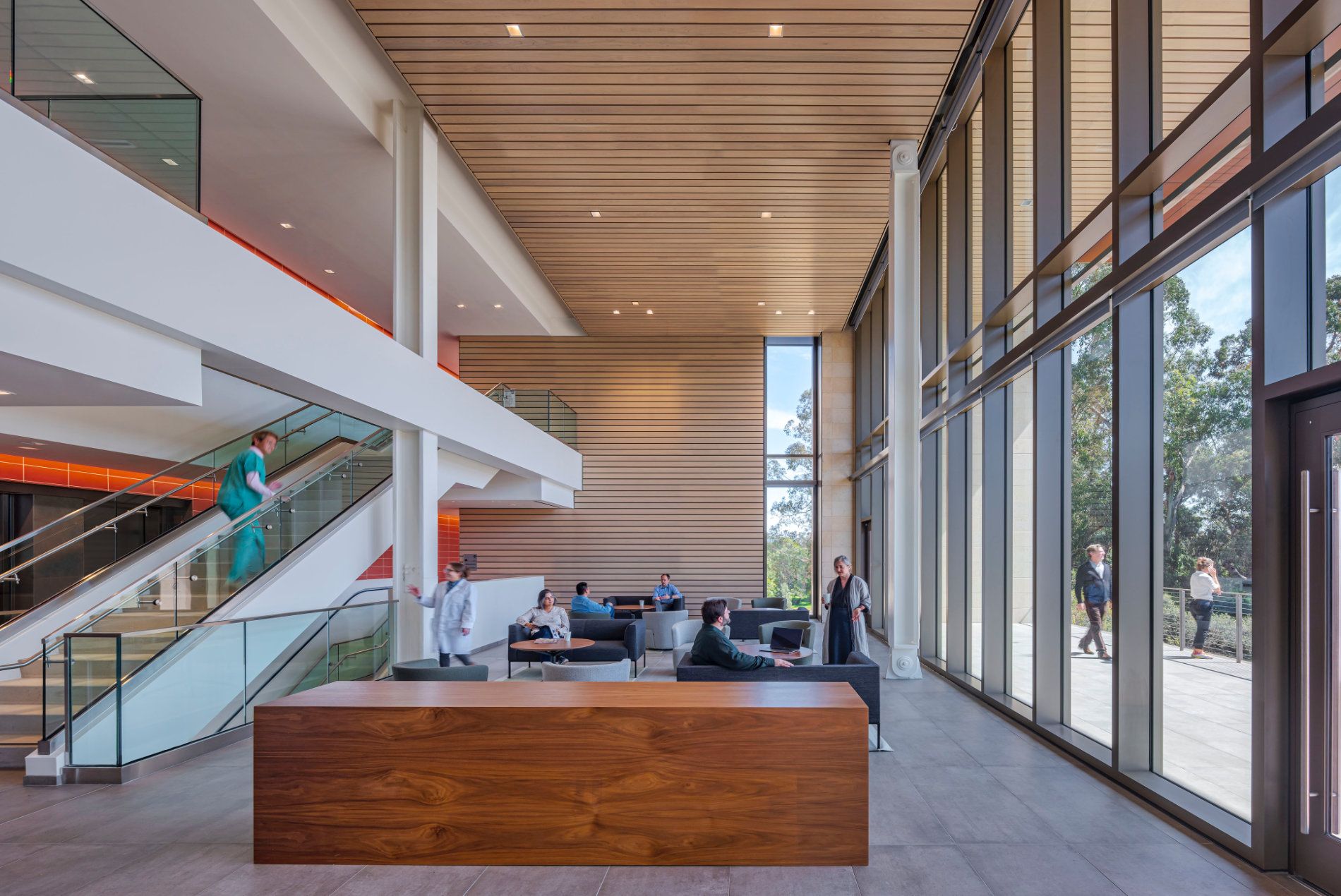The Stanford Center for Academic Medicine was created to support the well-being of clinical faculty and staff who work long hours in hospitals and clinics. The facility provides space for research and collaboration while also offering areas for rest and renewal.
Design Solutions
HOK helped the medical school’s leader plan the new office and develop a detailed program that would accommodate all clinical faculty and staff in a collaborative and calming environment. The building features offices, conference rooms, collaboration and education spaces, a fitness center and restaurant-style café with abundant connections to nature.
The building serves as a threshold between Stanford Medicine’s academic and clinical campus and the historic Frederick Law Olmsted-designed arboretum. Its three interconnected office wings rise around a landscaped courtyard filled with native plants. By lifting the west wing above the ground, the design forms a shaded, two-story-high porch that opens the complex to the surrounding landscape. The U-shaped arrangement ensures views of nature from every vantage point.
Northern California’s mild climate made it possible to move 20% of the program outdoors. Porches, terraces, balconies and sky bridges extend the building into the landscape, giving staff and faculty opportunities to work and socialize in fresh air. Upper terraces create the feeling of being in the trees, where breezes and light shift with the seasons to enhance comfort year-round.
A passive-first strategy shaped the building from planning through detail. Narrow wings and floor-to-ceiling windows maximize daylight and provide views to the arboretum, while ceramic frit patterns and vertical metal louvres on the curtain wall reduce glare and improve thermal comfort. The building achieves an annual energy use intensity of 15.9 kBtu/sf/yr, including renewables, representing an 85% energy savings from baseline. Biophilic design principles inspired by the native coast live oak tree guided the architecture. Like the tree, the center creates a layered environment where filtered light, shade and breezes combine to form a healthy microclimate.
Impact
The center brings all clinical faculty and staff together in a dynamic environment that balances academic work with personal well-being. The award-winning design integrates natural light, views and a mixture of indoor and outdoor spaces to encourage collaboration, provide respite for employees and promote sustainability through connections to nature.

